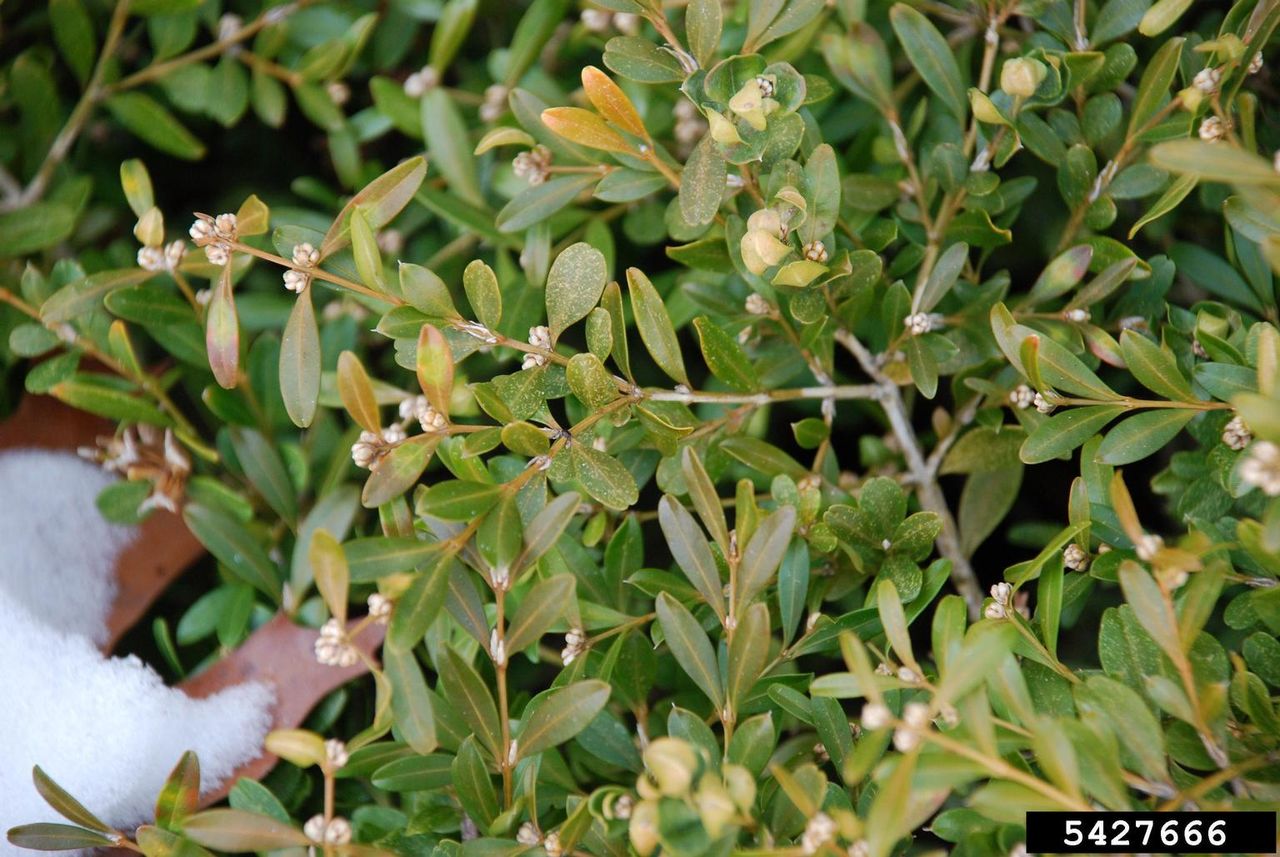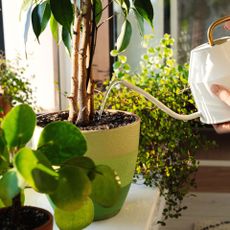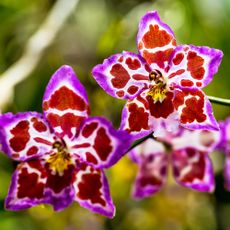Boxwood Mite Control: What Are Boxwood Bud Mites


Boxwood (Buxus spp.) is a popular shrub in gardens and landscapes around the country. However, the shrub can be the host to boxwood mites, Eurytetranychus buxi: spider mites so tiny that the insects are difficult to see with the naked eye. If you are planting new boxwoods, consider varieties that are mite resistant. For example, Japanese boxwood is less susceptible to boxwood spider mites than European and American varieties. If your beloved boxwoods are already infested, read on for tips on boxwood mite damage and boxwood mite control.
What are Boxwood Bud Mites?
What are boxwood bud mites? They are tiny insects that eat away on the bottom of boxwood leaves. Even with a hand lens, you may have trouble seeing these pests. You’ll see the boxwood mite damage easily enough, however. Leaves that are infected with boxwood spider mites look like they have been pricked by pins, and they may be spotted with very small yellow or white “freckles.” Severe infestations may lead to defoliation of the plants.
Boxwood Mite Control
As is often true in the garden, prevention is easier than cure when it comes to boxwood spider mites. One factor in mite infestation is the application of high nitrogen fertilizer, so avoiding this pitfall is a good first step. In order to understand boxwood mite control, you need to understand the life cycle of the insect pest. Boxwood spider mites lay round, greenish eggs on the underside of the foliage, and the eggs overwinter there. They hatch out in May and grow up fast, laying eggs themselves in a couple of weeks. The fact that many generations are born every growing summer means that you have to start boxwood mite control early. This mite is most active in spring and early summer, so that’s the time to start treatment for boxwood bud mites. Treatment for boxwood bud mites ranges from organic to chemical. Start with water. Using a fast stream of water from the hose, wash mites from the boxwood foliage. If this approach isn’t working, you can spray the foliage in summer with horticultural oil. As a last resort, treat the boxwood spider mites with abamectin (Avid), bifenthrin (Talstar), malathion, or oxythioquinox (Morestan) in early May.
Gardening tips, videos, info and more delivered right to your inbox!
Sign up for the Gardening Know How newsletter today and receive a free download of our DIY eBook "Bring Your Garden Indoors: 13 DIY Projects For Fall And Winter".

Teo Spengler has been gardening for 30 years. She is a docent at the San Francisco Botanical Garden. Her passion is trees, 250 of which she has planted on her land in France.
-
 Feeding Houseplants: How And When To Fertilize Indoor Plants Like A Pro!
Feeding Houseplants: How And When To Fertilize Indoor Plants Like A Pro!Container-based houseplants have specific feeding needs over and above plants grown in the ground. Here’s how and when to fertilize indoor plants the right way
By Bonnie L. Grant
-
 8 Rare Orchids That Make Stunning Houseplants – Some Are Surprisingly Easy To Grow
8 Rare Orchids That Make Stunning Houseplants – Some Are Surprisingly Easy To GrowDiscover unique orchids that will add exotic beauty to your home. Some make easygoing houseplants, while others offer a challenge for more seasoned growers.
By Melanie Griffiths